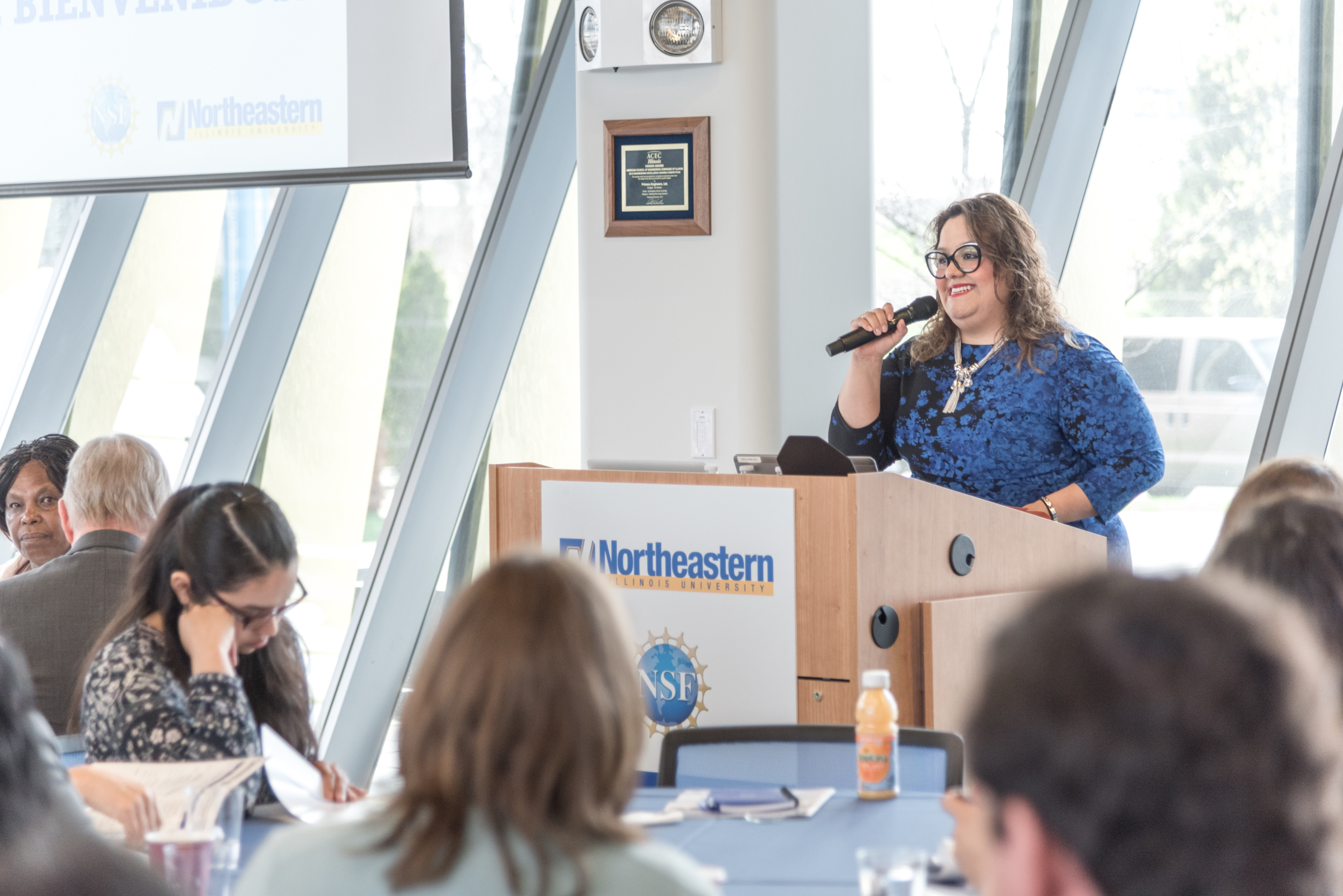
Our History
In the late 1960s, a group of civically engaged Hispanic students at Northeastern Illinois University proposed an English as a Second Language (ESL) learning and study center be established in the community to provide ESL instruction to those seeking access to better educational opportunities and access to a higher education setting. Under the leadership of Rose Brandzel, coordinator of community and public services at Northeastern Illinois State College (now known as Northeastern Illinois University), funds were obtained from the U.S. Department of the Education Title I of the Higher Education Act and the Illinois Board of Higher Education to establish this program.
In March 1969, with the support of students, faculty and administration, Northeastern opened ¡Aqui Estoy!, a storefront operation serving the Hispanic community of West Town and Humboldt Park. Rosa Hernandez, Northeastern student and English language volunteer, became the first director. The programs offered in this location consisted of GED and ESL programs for adults, and youth counseling and tutoring. By 1972, funds for this program ran out and the program was suspended.
In 1973, a new director, Miguel Velasquez, was hired to revive and expand the services of the previous program. The new academic offerings included ESL, GED, college-level courses, and other basic skills programming including typing, drafting and stenography. The name of the educational program was changed to C.L.A.S.E.S. (Comunidad Latina Adelantando Sus Estudios Secundarios). Between 1973 and 1974, progress was made to grow C.L.A.S.E.S. and a new and bigger facility was leased at 2434 West North Avenue. However, because of conflicts between the director and the Union of Puerto Rican Students (UPRS) who felt they had not been consulted in the development of the program, C.L.A.S.E.S. never became operational.
By the fall of 1975, there was a strong division between various Latino student groups based on their political ideologies. Some of these students supported a formal education commitment for a new academic facility and were willing to cooperate with the administration to find a new director. The new academic facility was named El Centro de Recursos Educativos (Center for Educational Services). This satellite extension of the University within the Hispanic community established a permanent advisory council consisting of University faculty, students and members of the Hispanic community at-large with the support of former Northeastern President James Mullen under the direction of Ann E. Smith, vice president for academic affairs. The goal of this new program was to establish a community-based academic program for college credit in the West Town and Humboldt Park neighborhoods of Chicago. Jose A. Acevedo was hired and appointed coordinator by the University to direct, organize and develop a curriculum with the assistance of the Advisory Council
In 1991, El Centro moved to 3119 North Pulaski Road. While at this location, the University invested significantly in the infrastructure of the building, as well as El Centro’s programs and services. Beginning in 1996, El Centro underwent three major expansion and construction projects, all to address the needs of our students and the community we serve. The last construction project completed in 2004 provided an opportunity to increase our course offerings, including the general education program of the University. Additional undergraduate courses in social work and several graduate courses from the College of Education were offered. As a result, El Centro made history in the fall of 2009 when it enrolled more than 1,000 students. In 2002, Northeastern partnered with ASPIRA Inc. of Illinois to help inner city high school students graduate from high school and prepare them for college life and beyond.